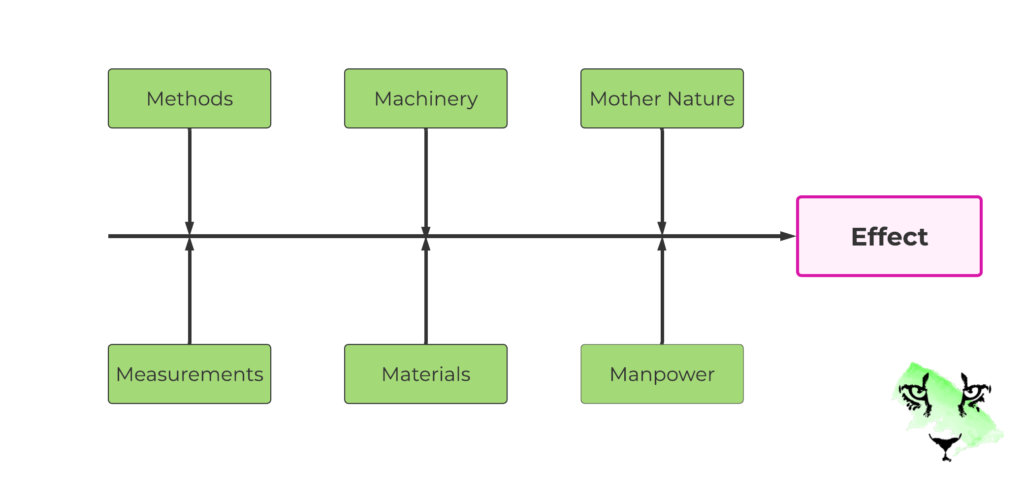Unfortunately, as entrepreneurs, project leaders, project managers, and even team members and individual professionals, we occasionally deal with project failure.
When We know, we know… We just dropped the “F” bomb.
There are many resources out there on how to avoid failure (which, of course, is always the preferred approach); however, the truth is that failure does happen. Project teams and leaders must recognize that project failure is incredibly common.
For example, if we try to walk or run without tying our shoes, what happens? We trip and fall. Failure is a lot like that. Whenever we fail, rather than react emotionally, we should ask ourselves, “what did we miss in the process?”
In this article, we will talk about the “F” word—failure, specifically the common reasons why failure happens, how to deal with it, and a strategy for how to learn from it.
The Top 10 Reasons for Project Failure
Although reasons for project failure can differ across organizations and teams, according to the Project Management Body of Knowledge (PMBOK) Guide, Sixth Edition by the Project Management Institute (PMI), the primary reasons for project failure include:
- A lack of organizational support and culture
- A lack of processes
- Overly complex processes
- Improper project planning
- Lack of clear goals
- Lack of proper stakeholder management and engagement
- Lack of value delivered to stakeholders and/or customers
- Unrealistic or improperly managed project schedules
- Lack of acceptance criteria and testing by stakeholders and/or customers
- Poorly-defined requirements
Understanding the most common points of failure is the first step in preventing failure. So, let’s dive into each one and talk about what you can do to help avoid them.
Tips for Avoiding Project Failure
1. Don’t operate like failure DOESN’T happen.
Back in the day, when I worked in the “corporate” world as a full-time, 9-to-5 project manager, we had processes for every phase and aspect of the projects we managed. The project phases ranged from editorial to production to manufacturing.
Occasionally, we would have a project that ended up with a manufacturing error or defect (the bookbinding was broken, the book was paper bound instead of hard bound, and so on). When these defects happened, no one ever knew what to do. Why? Because we had no process for dealing with defects.
I suggested we update our training materials and documentation with a process on how to handle production and manufacturing defects. However, I received push-back from leadership. Their reasoning was “because defects aren’t supposed to happen”.
It’s fair to say that defects aren’t supposed to happen, but it’s foolish to operate like they don’t happen.
So the first rule of project failure? Don’t pretend like it CAN’T happen.
2. Understand project value (or the “WHY”).
We’ve all made this mistake. We are assigned a new project to manage or work on, but we might not fully understand the purpose of it, to begin with. Already we are setting ourselves and our teams up for failure.
As mentioned above, one of the most common points of project failure is a lack of clear goals. Many organizations and project teams decide to work on new projects just because they’ve been in their project backlog or inventory. Sure, they have been put there for a reason, but once it’s time to move the project from the backlog and into production, project leaders and teams should ask WHY. By simply asking this question, project leaders can tie the project back to value, allowing them to plan and set clear goals for the project. This will ensure project team members understand their roles and the project’s purpose.
3. Outline clear project goals and objectives.
We still see this to this day. Project leaders push project teams to create a project plan without considering the project goals and objectives. Teams that do this repeatedly set themselves up for project failure. However, you can avoid this by creating a solid business case. Then, you can break down the business case into a project charter, which details the following:
- Problem statement
- Project scope
- Project goals and objectives
- Key measurements
The project charter should then be shared with all stakeholders and the project team. You can even get sign-off from stakeholders ensuring they fully understand the project objectives and goals and that everyone is on the same page.
4. Assign and define roles, responsibilities, and decision-makers.
One of the most frustrating things for project team members is a lack of understanding of who is doing what throughout the project and who makes decisions. This lack of clarity is often due to a lack of proper resource planning and allocation and a lack of a clear process.
Use a RACI matrix to organize all project team members and stakeholders, who is responsible for what and at which project stage, and who is responsible for approving milestones and deliverables. This project management artifact is a great reference for all project team members and stakeholders over the project lifecycle.
Tips for Dealing with Project Failure
Remember, failure sparks an emotional response since we are human beings and we naturally fear failure. So rather than avoid having difficult conversations about failure, why not be open and honest about it? What can it hurt? In fact, this openness helps build a culture of transparency and resilience. it also enables teams to think differently about failure, viewing it as an opportunity to learn and improve rather than a punishment.
Although we might not like it, here are some tips for dealing with project failure:
1. Define Failure
Some organizations might define failure as a project that doesn’t function according to requirements or leads to dissatisfied customers or end users. Others might define failure as a project that is never finished.
According to the Project Management Body of Knowledge (PMBOK) Guide, Sixth Edition by the Project Management Institute (PMI), there are internal failures and external failures. Here are the differences between the two:
Internal – Projects that involve or inevitably lead to waste, scrap, or rework.
External – Projects that cause repairs, warranty claims, customer or end-user complaints, returns, or damaged reputations.
Regardless of how your team defines failure, failure really boils down to not reaching goals.
2. Factor Failure Costs
Project managers must factor the failure cost into their project planning activities. In fact, an entire section in the Project Management Body of Knowledge (PMBOK) Guide, Sixth and Seventh Editions, by the Project Management Institute (PMI) provides tactics for addressing project failure costs. The two types of failure costs include:
- Cost of Conformance – Money spent during the project to avoid failure
- Cost of NONconformance – Money spent during and after the project due to failure
It might seem counterintuitive and even counterproductive to plan for failure, but that doesn’t mean project teams shouldn’t strive for success. Rather, it’s about accepting the risks of failure and being smart about it.
3. Perform a Root Cause or Failure Analysis
After determining the project was a failure, it’s important to understand what type of failure occurred and why it occurred. Project leaders and teams must ask themselves, was the failure internal or external? And WHY? What were the facts that occurred leading up to the failure?
One tactic is following the 6 Ms framework. This tactic allows teams to take an unbiased approach to brainstorm and categorize what went wrong or what facts contributed to the failure so they can be aware of their particular points of failure in future projects.
4. Change Your Thinking
Regardless of why failure occurs, it’s necessary to learn from it to improve how teams work together and improve the project management function as a whole.
The PMI addresses the concept of planning and imperfect projects. In fact, the PMI recommends adopting imperfect project management thinking in project planning. Of course, project managers and project leaders assume that it is possible to meet project goals with thorough planning, integrating tasks, planning for and responding to risks, and managing stakeholders. However, imperfect project management thinking adopts a more realistic view, which is informed by any barriers to obtaining project goals.
5. Create Continuous Improvement Practices
One such tactic for continuous improvement is developing a fail-safe. Although a “fail safe” is typically related to addressing project complexity, a “fail safe” can help deal with project failure and, in some cases, prevent it. For example, for process-based complexities, a fail-safe relates to elements of a system that assist with functionality if one element or component of the project fails.
Build a Continuous Improvement Plan
If we try to walk or run without tying our shoes, what happens? We trip and fall. Failure is a lot like that. Whenever we fail, rather than react emotionally, we should ask ourselves, “what did we miss in the process?
Of course, no one likes dealing with failure, or admitting to failure. However, the strongest teams and organizations not only plan for failure but also have solid continuous improvement practices built into their everyday processes to help them be better, reach improvement goals, and adopt an “always learning” mindset.
Need help building a continuous improvement plan for your team? This is one of our many specialties. Contact us today to learn more about how to turn “failure into fun”, like these guys…


